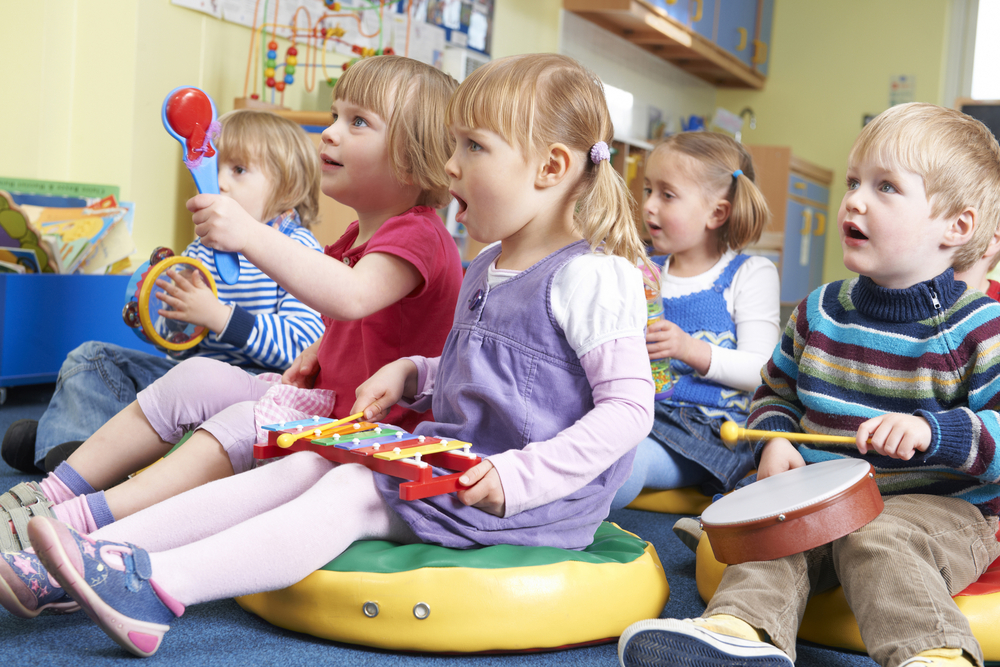How to Introduce Music and Rhythm to Your Baby
Music isn’t just a form of entertainment. It’s a universal language and, even from a very young age, can be a powerful tool in the development of a child. If you’ve ever seen a baby light up at the sound of a soothing tune or watched a toddler sway to the beat of a drum, you know there’s something magical about the connection between little ones and the rhythm of music.
Why Introduce Music and Rhythm Early?
Before we delve into the “how,” let’s talk about the “why.” Music is a multi-sensory experience. It isn’t just about hearing; it’s also about feeling, moving, and sometimes even seeing (think of colorful musical videos or instruments). Introducing music and rhythm to your baby can:
– Boost cognitive development: Studies have shown that music can enhance brain functions, impacting the areas responsible for processing sounds as well as other key functions like language development.
– Improve linguistic abilities: Rhythm and melody introduce different tones and sounds that can improve how babies grasp language nuances.
– Encourage motor skills development: Dancing and moving to music helps babies develop their coordination and fine motor skills.
– Strengthen emotional and social bonds: Sharing musical moments can enhance the bond between you and your baby and also foster their social skills as they grow.
Making Music a Part of Your Baby’s Life
We’ve established that music is beneficial, but how do you effectively bring it into your baby’s life? Here’s a step-by-step guide:
Step 1: Start with Soft Lullabies
From birth, babies can experience music. Gentle lullabies and soft melodies are great to introduce music to newborns. The rhythmic and calm nature of lullabies can soothe your baby, helping them to sleep or settle down. Singing also creates a sense of intimacy and comfort, strengthening the emotional bond.
Step 2: Incorporate Music into Daily Routines
You don’t need a special time or place to enjoy music with your baby. Make it a part of your daily activities. A sing-song voice can transform a diaper change or a feeding session into a joyful musical experience. Play upbeat songs during playtime to stimulate movement and exploration, and choose calming melodies when winding down for bedtime.
Step 3: Use Movement and Dance
Babies naturally want to move, and music is the perfect motivator for physical activity. Hold your little one in your arms and sway to the music, bounce gently to the rhythm, or help them clap their hands. These movements help your baby to understand the concept of rhythm firsthand.
Step 4: Provide Musical Toys
There’s a whole world of musical toys designed for babies. From rattles to musical mobiles, these objects not only entertain but can also be educational. Toys like mini keyboards or drum sets can also allow babies to start creating their own tunes, even if they’re just random notes and beats for now.
Step 5: Explore Different Genres
Don’t limit your baby’s musical experiences to children’s songs. Expose them to a wide variety of music genres, including classical, jazz, pop, rock, and world music. Each genre has its unique characteristics, and diversifying their auditory experiences can enhance their ability to recognize and appreciate a broad range of sounds.
Step 6: Make It Interactive
Interaction is key to learning. Encourage your baby to respond to music—whether it’s smiling back when you sing a happy tune or tapping an instrument in response to a beat you create. This back-and-forth exchange is vital for social development and communication skills.
Step 7: Attend Baby-Friendly Musical Events
Many communities offer music classes or events aimed at babies and toddlers. These can be wonderful opportunities for social interaction and exposure to music in a group setting. Keep an eye out for library sing-alongs, music-based playgroups, or outdoor concerts that are suitable for the youngest audiences.
Step 8: Create a Musical Environment
Create a space at home where music is part of the atmosphere. Having background music playing can familiarize babies with different sounds and rhythms. Watch for their reactions to certain songs or tunes, and play those more often if they seem to enjoy or respond to them positively.
Step 9: Be Patient and Observant
Every baby is unique, and their relationship with music will be as well. While some may be drawn to certain tunes or instruments immediately, others may take longer to show interest. Observe how your baby reacts to different musical experiences and follow their lead.
Step 10: Keep It Fun and Stress-Free
Remember, the goal of introducing music to your baby isn’t to make them a prodigy; it’s to enhance their development and enrich their life experience. Keep music fun, stress-free, and something that both of you look forward to. The joy and love for music you foster now can set the stage for a lifelong appreciation of the arts.
Final Thoughts
Music and rhythm are more than just melodies; they are tools that can enhance your baby’s developmental journey. With each beat and tune, you’re not just entertaining your child; you’re helping them grow, learn, and connect with the world in new and exciting ways. Embrace the power of music and enjoy the symphony of growth and joy it brings to your little one’s life. Remember, there’s no right or wrong way to introduce music—just turn it up, start the beat, and let the magic unfold.
